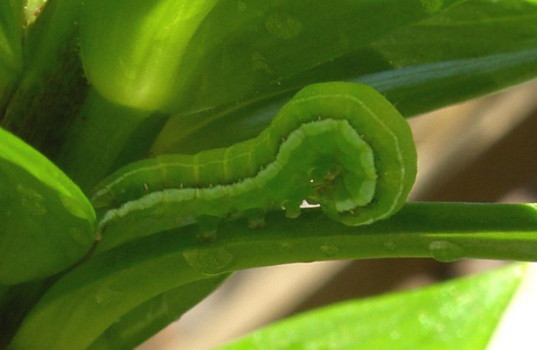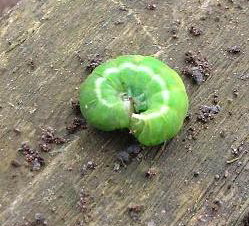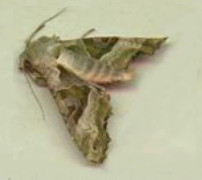Angle Shades Moth Caterpillar
Scientific name: Phlogophora meticulosa

This bright green to brownish yellow caterpillar is the larval stage of the Angle Shades Moth. It feeds on quite a few woody and herbaceous plants including dock, nettle, bramble, oak and some ornamental plants, leaving holes in the foliage and damaging flower buds. When disturbed the caterpillar adopts a 'c'-shape and this one was about 35mm in length, but they can be up to 45mm long.
 |
 |
There are two generations during the year. Eggs are laid on food plants in late May to June and again from August to October. The larvae of the second generation overwinter and feed when night temperatures are above 5°C. The brownish pupa develops just under the soil, the one pictured below is similar to other pupae such as that of the Yellow Underwing Moth.
 Angle Shades Moth. |
 Moth Pupa. |
Adult moths have a wingspan of 45-50mm and are active all year round with some migrants arriving from Europe in late summer adding to the numbers in the south of the British Isles. As with most moths and butterflies they are not pests it is their larval stages that do the damage, they feed on the nectar of flowers such as Buddleja. The wing pattern and shape resembles a withered autumn leaf.
Back to GARDEN CREATURES